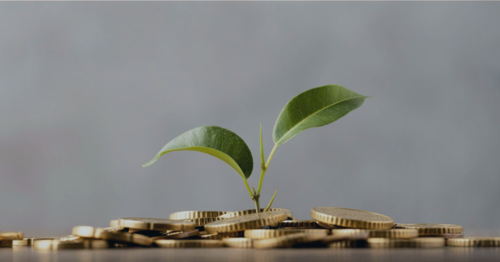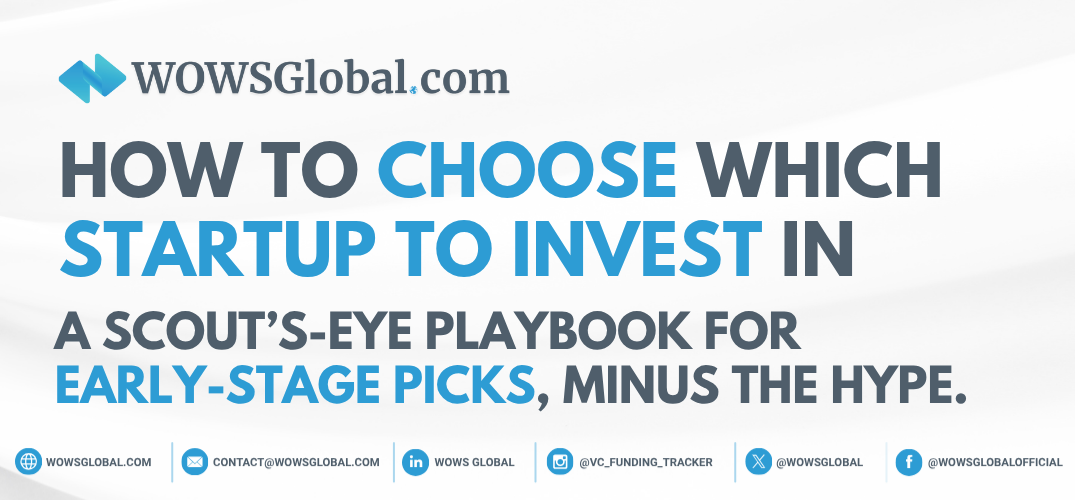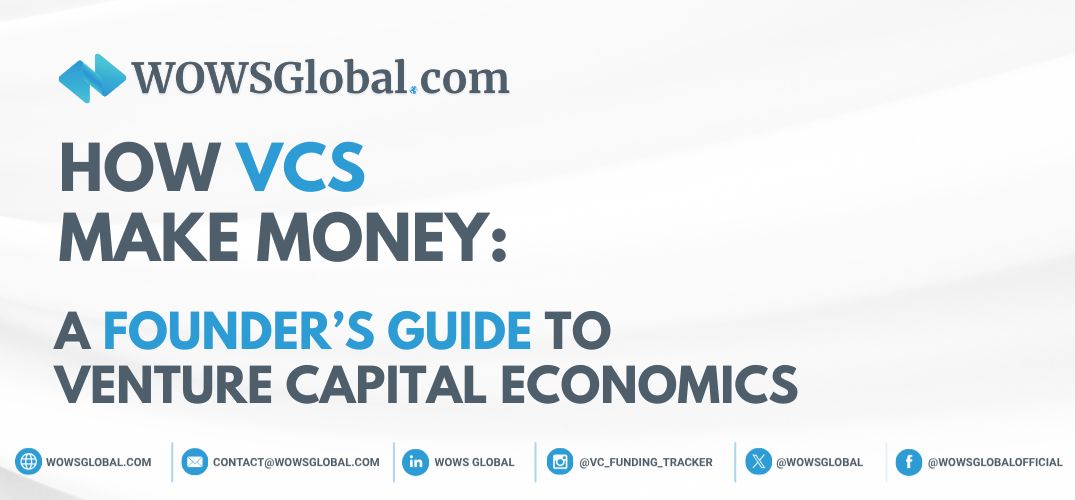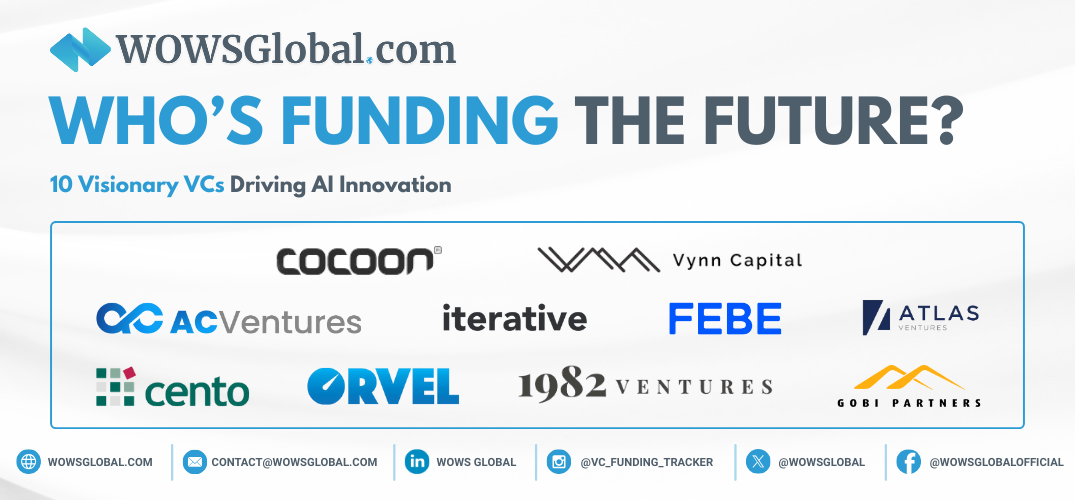Founders – Are you Ready for Your Next Funding Round?
Funding Funding Round Investment Investor Startup Startup Funding Stock

It is no secret that startup founders need to seek funding at different stages of their venture. However, this is no straightforward process. To secure the amount of funding you are after it is necessary for founders to fully understand what each funding round entails and when the time is right to begin each stage.
Timing is of the essence. Going too early or leaving it too late can have a significant impact on the growth of your company.
Bearing this in mind, let’s take a look at each funding round, how they differ, and what is expected if you are to successfully negotiate each entered round:
In this article, we’re going to discuss:
- There are Multiple Stages of Startup Funding
- What is in it for Startups and Investors?
- Funding Valuations
- Pre-Seed Funding
- Seed Funding
- Series A Funding
- Series B Funding
- Series C Funding

There are Multiple Stages of Startup Funding
In the first instance, the vast majority of startups begin their business by bootstrapping. This means using personal funds and if necessary asking family and/or friends to help you get your fledgling business off the ground. From there funding solutions come in multiple stages.
While the traditional stages are classed as Seed, Series A, Series B, Series C, and so forth, there is an early Pre-Stage Seed round that is not always included in the traditional rounds. However, this route is growing in popularity so it will also be included below.
Founders need to be conscious that each round generally revolves around various factors. These include such things as current maturity, market size, current revenues, management structure, company potential, and the proposed growth development stage of the business.
It should also be noted that before each funding round your company must receive a new valuation.
Before getting into each stage in turn let’s consider two things. First, an explanation of the fundraising benefits from both founder’s and an investor’s perspective. Second, why are the individual funding valuations put in place, and what effect do they have?

What is in it for Startups and Investors?
The path that founders take to firmly establish their venture will differ as will the funding timeline. Depending upon your situation and status it can take many months to secure the right type and amount of funding. This should be the expectation if you are new to the startup world.
On the other hand, if you have a truly revolutionary concept or have a proven track record in startup success it will be easier to bypass some of the funding rounds and move through the process of securing needed capital more quickly.
Founders should clearly understand that only a very small percentage of startups can continue to sustain growth without outside fundraising assistance. As startups begin to grow they need money to finance such things as operational output, increased monthly outgoings, and to bring on board key employees to further capitalize on early gains.
It also stands that as the business establishes and grows it needs to be taken to the next level. This is where the additional funding rounds come into play.
To secure these additional funds at different stages (rounds), founders need investors. While these individual professional investors or VC (Venture Capitalist) firms want your business to succeed they also expect to gain something back from their investment.
The investment they give means they will retain partial ownership of your company. Assuming your company grows and earns profits the investor(s) will be rewarded proportionally according to the investment amount given.
Founders need to be aware of this dilution of ownership and understand exactly what they are giving up at each funding stage for the additional investment received.

Funding Valuations
As founders prepare for each round of funding, analysts will undertake a valuation of your company. How the valuation is reached depends on a wide variety of factors. This includes such things as the management structure and how your company is run, your track record to date, market size/share, and the investment risk involved.
As you progress to each funding round your business valuation will change. Again, this depends on various things and includes the amount of time you have been operating, the maturity level reached and forecasted growth prospects.
It is these factors that will impact why you are looking for additional funding and which type of investors are most likely to get involved.
The Different Funding Rounds Explained
Here are details of the most common funding rounds starting with a round that may or may not be included in traditional funding rounds and the reason it is being included here:

Pre-Seed Funding
Until recently pre-seed funding was seen as funding that would come from the founders themselves or family and friends. This is still seen as the case and is a very viable option.
However, over the last few years, pre-seed funding has emerged as a new funding stage. This is seen through the fact there is now a healthy selection of active and dedicated pre-seed stage investors out there.
The purpose of pre-seed funding generally allows founders to find and establish product-market fit, hire those all-important early employees, and test go-to-market models. The funding you are after should last between 12-18 months.
Depending upon the product or service you are setting up, the amount of pre-seed investment will vary widely. Founders should weigh up their specific business needs before having a valuation set. This will help to determine how much money can be raised.
That amount can be anything from $100,000 right up to $5 million. Whatever amount you are looking to raise should be the money required to see you hit the goals set and reach the forecasts given during your pre-seed funding pitch.
Those founders looking to acquire outside pre-seed funds will find the process mirrors a traditional B2B sales process. This is all about your funnel process. It means you will be talking and adding investors to the top of the funnel while pitching as well as negotiating in the middle of the funnel. The goal is to close at the bottom of the funnel.
Looking for outside pre-seed funds does have one advantage; it is open to different investor types. Examples being:
- Individual Investors: These are people who are comfortable with investing smaller amounts.
- Angel investors: These individuals are usually prepared to offer startups funds ranging from a few thousand $ up to $500,000+.
- Accelerators/Incubators: Accelerator programs function in two ways. They can take place in tandem with the pre-seed funding round, or they can potentially give follow-on funds after program completion to help with pre-seed round funding.
- Dedicated VC Funds: As mentioned, many dedicated pre-seed funds have opened over the last few years. These funds are designed specifically to fund pre-seed rounds. It is also the case that the more traditional as well as larger firms are making inroads into pre-seed round funding.
Let’s now take a look at what is termed the more traditional and very well-established funding rounds starting with:
Seed Funding
It is still the case that many startup founders see the seed funding round as their first official equity funding stage. It generally represents the first foray into raising money to get the business running.
The “seed” analogy relates to planting a seed that will grow into a healthy specimen – In this case your business. If successful, many companies never extend beyond the seed funding series or get into Series A rounds and beyond.
Similarities in terms of what the money is used for and where it comes from as seen from the pre-seed funding round. With seed funds, a startup is looking at financing things such as market research, product development, assistance in the determination of the final product or service, and understanding the demographic group(s) that need targeting. Part of the money will also be used to employ a founding team to help complete these tasks.
The potential investors involved include founders, family, friends, incubators, venture capital firms, and others. The mentioned “angel investors” are a common source of seed funds. It is a fact that they appreciate riskier ventures and many startups fit into this category. This is due to little in the way of a proven track record to date.
Startups that receive funds from angel investors will be expected to give an equity stake in their company.
The amount of capital a new company raises during a seed funding round varies significantly. Amounts can be anywhere from $10,000 up to $2 million+. While not set in stone, company valuation at the seed funding round stage comes in somewhere between $3 million and $6 million.

Series A Funding
Before considering Series A funding it is very important to have developed a business model plan that shows how long-term profit will be generated.
This is mentioned because startups who have used the received seed funding amount effectively often have persuasive ideas. Ones that are generating a substantial and growing number of enthusiastic users. However, the company is still not clear on how it will effectively monetize its business.
In terms of the Series A amounts raised this can be between $2 million to $15 million but those figures can differ for companies in the high-tech space.
Founders should be clear that in the Series A funding round investors are not just looking for great ideas. Yes, they want those, but they also want evidence of a strong strategy to turn your plans into a successful business. One that makes money.
At the Series A funding stage, it is often the case that any investors are more involved in what is seen as a more political process. Founders may find that a lead investor serves as an “anchor”. If this happens it tends to be easier to attract additional investors.
Even companies who have successfully come through their seed funding process and matched their growth forecasts are often not able to generate investor interest when it comes to securing the Series A funding amounts they are after.
This is seen through the fact that estimations put fewer than 10% of seed-funded companies securing the funds they are looking to raise at the Series A funding stage.

Series B Funding
This is all about taking your business to the next level. The development stage has come and gone and the funds investors give here are used for expanding your market reach.
You will already have developed substantial user bases and have proven to investors that your company is in good health. You are telling investors that your company is ready to embrace success at a higher level.
The funds will be used to grow your company to ensure you can meet these increased levels of demand. To do this you require top-quality talent, there is a need to bulk up on business development, advertising, technical and customer support, and ultimately increase sales even further.
Because you are now a well-established company your valuation will reflect that. This can be assessed at anywhere between $30 million and $60 million.
The Series B fundraising process has similarities to Series A funding in that many of the same investors (including a key anchor investor) are involved. The difference is that you will see a new wave of interested venture capital firms, ones that specialize in later-stage investing.

Series C Funding
Any business looking at series C funding is firmly established and successful. The reason to look at additional funding is to allow for the development of new products and services, expand your reach into new markets (for example, getting into global markets), and perhaps acquire other companies.
At the series C stage, you will be looking to raise significant sums. These can range between $30 million and $100 million ($50 million is often touted as an average). You also have a significant valuation which is likely to be over $100 million.
Investors at this stage are prepared to invest large sums of money in your business with the expectation that they will receive more than double the invested amount back. This means investors at earlier stages who perhaps gave investments of between $1 million and $5 million are no longer leading the round (although they may still be prepared to invest further).
The big money is likely to come from the likes of later-stage VC funds, private equity firms, hedge funds, and banking institutions.
It is also the case that when preparing for Series C funding your company’s credentials and success to date speaks for themselves. This means there will be more inbound investor requests.
Is That the end of Funding Rounds?
The answer here is ‘No’. While it is most common for companies to end their external equity funding when they have secured Series C funding some companies can go on to Series D and even Series E rounds of funding.
There are rare cases of companies going for Series F and Series G funding rounds but this is only because capital is so inherent to the way they do business.
Conclusion
The injection of funds into a startup is the catalyst for growth and prosperity. As can be seen from the above explanations, the purpose of each funding round is to spur your company onto greater things.
The challenge for founders is that fundraising is a complex art with many factors to take into account. Your fundraising projects must be carried out most efficiently and effectively.
With such an important emphasis placed on the funding process, founders need to maximize leverage to secure the funds they are after. This is very often easier said than done.
However, with the aid of highly knowledgeable and experienced assistance, your fundraising goals stand a far greater chance of being realized.
In that respect WOWS Global is ready to help you at every stage of your fundraising journey. Our End-To-End Equity Management Ecosystem has been designed to unify companies with their shareholders.
The fundraising services and guidance WOWS offers are fully transparent and our experts are ready to guide you through what many see as a fundraising maze.
Our team offers all-inclusive valuation services that are necessary for each individual fundraising round. Founders can also add to this such benefits as financial modeling, the production of relevant legal documentation, and due diligence services.
If you are looking to get your fundraising efforts off to the best possible start please reach out to us at contact@wowsglobal.com
Related Posts
-

Startup & Venture Capital Early Startups Founder Investment
How to Choose Which Startup to Invest In
Choosing a startup isn’t a coin toss. This quick-read playbook covers market sizing, founder fit, unit economics, risk mapping, and terms, written in a toned-down sports recap style. Wrap up with “WOWS Insight,” where WOWS Global explains how it matches investors with companies that fit their thesis, stage, and traction. -

Exit Strategy M&A readiness Cap Table Startup Exits Investor
Planning the Finish Line: Why Every Business Needs an Exit Strategy
Launch matters, but exits set the score. Learn how early planning, clean governance, and buyer mapping turn hard-won growth into the best possible outcome. -

Startup & Venture Capital VC Funding Founder IPO
How VCs Make Money: A Founder’s Guide to Venture Capital Economics
Venture capital isn’t a black box. Learn how LPs, GPs, fees, carry, and portfolio math actually work, then frame your pitch as the fund-maker with a credible exit path. -

SEA Early Startups Funding VC AI in Southeast Asia
Who’s Funding the Future? 10 Visionary VCs Driving AI Innovation
Explore 10 standout venture capital firms driving Southeast Asia’s AI-first startup ecosystem, from early-stage champions to fintech and deep tech backers. -

Startup Startup Growth Founder Health Habits
Startup Growth and the Surprising Power of Sleep: What the Data Says About Founder Health Habits
Forget the hustle myth. Founders who sleep smarter, not less, are scaling faster. The data reveals surprising links between sleep, wellness, and startup success. -

Venture Debt Finance AI Investor
Bridging the Funding Gap: Why Strategic Planning Between Rounds Is Critical
Between funding rounds is where the real work begins. Strategic planning during this quiet phase can determine how ready your startup is for the next big raise. From fractional CFOs to venture debt and investor engagement, WOWS Global helps you stay prepared and in control.
